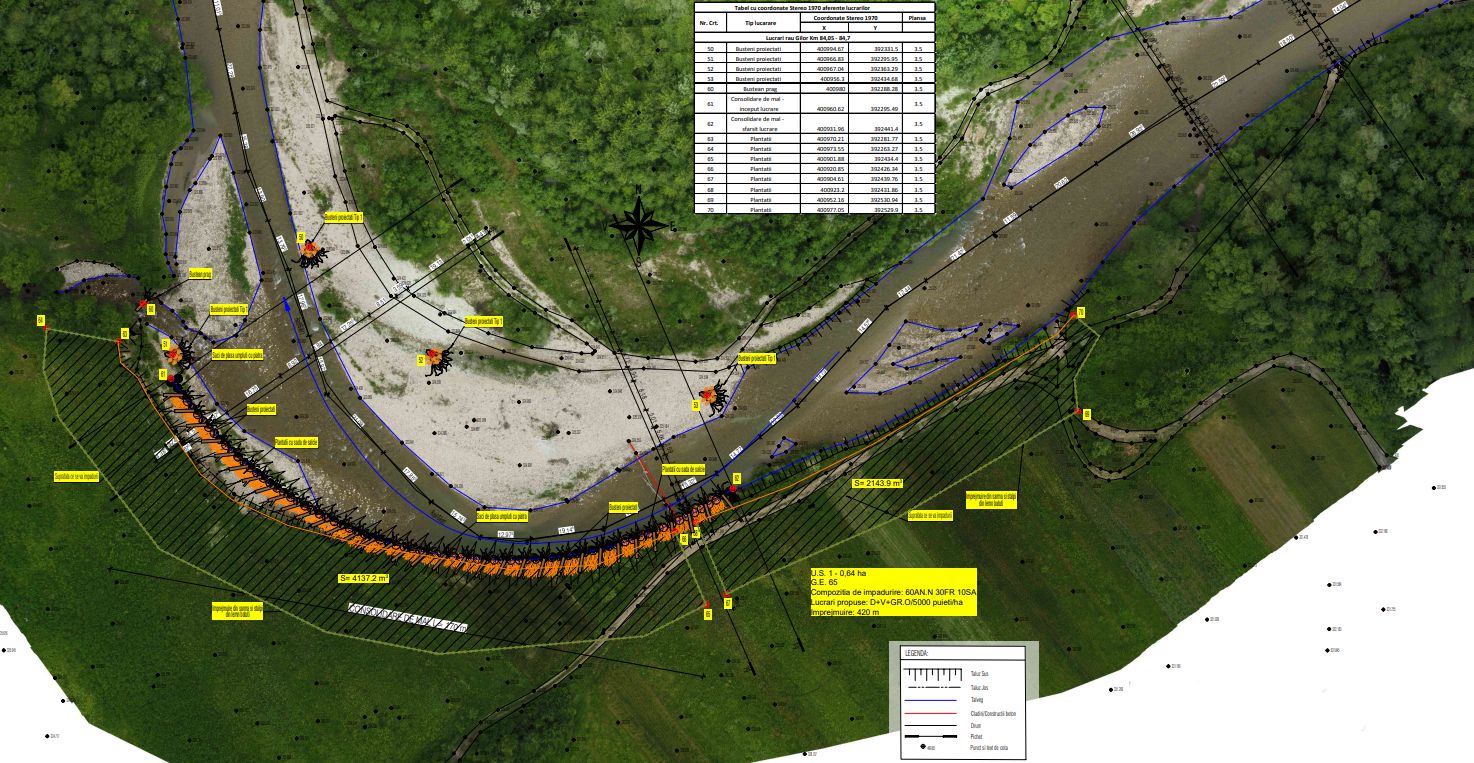If some time ago we talked about the afforestation works to be carried out in the Natura 2000 site of Gilort River, today we will present the works for the restoration of migration corridors and habitats for fish species in the Gilort River.
Thus, according to the Fish for Life project, it is necessary to apply green solutions in order to restore the natural morphology of the Gilort and Galbenu rivers and the riparian forests. Proposed works for the Gilort River include:
- reducing the rate of bank erosion and lateral migration of the river, with beneficial effects for the protection of agricultural lands with alluvial soils, rectification of the meandering radius and defense with trees with roots fixed along the bank, stabilized with cylindrical nets, filled with stone or river boulders;
- reducing the tendency of shortening (short-circuiting) of the river course and maintaining the meandering with the specific radii of the meander - placement of agglomerations of "designed logs" such as drowned logs and fixed in the riverbed, to stabilize the slope of the secondary channel (escape arm) and create habitats as refuge areas for fish, especially in high waters;
- improving the longitudinal connectivity of the riparian forest vegetation on the buffer zone through afforestation works with native species of white willow, white poplar and black alder; these works have the role of protecting the works carried out for the stabilization of the shore, but also of reducing the water temperature in the meandering basins - planting and maintaining the riparian forest vegetation as much as possible along the entire length of the right bank occupied by agricultural lands.
For the Galbenu River, one of the most important tributaries of the Gilort in the area, the following intervention actions have been proposed to restore the heterogeneity of habitats:
- Random placement of boulders or large angular stones in the riverbed, to increase the variability of local water currents and the formation of micro-habitats of areas with calm waters;
- Placement of groups (clusters) of boulders or large stones, for the restoration of small basins as habitats and refuge areas for fish;
- Creating micro-dams as habitats and refuge areas for fish. These micro-sockets will be made of large boulders, placed in the shape of a horseshoe.
The following types of works are required for shore reinforcements: excavations for the preparing river beds for future works, placement of mesh bags, mechanized placement of logs, compaction of the soil placed above them for the best anchoring of logs in the shore and, at the same time, the construction of the slope and planting willow plantations in order to vegetate them and strengthen the slope. The following types of works are required to make the designed logs: excavations for the preparation of the work bed, mechanized placement in a horizontal position, on the bed of the riverbed, logs, their fixing / anchoring with wooden poles, mechanized placement of boulders, mechanized ballast placement / gravel. For the realization of micro-slags, it is necessary, in a first phase, the excavation for the preparation of the bed of the work, followed by the mechanized placement of the boulders.
The following types of works are required to make the designed logs: excavations for the preparation of the work bed, mechanized placement in a horizontal position, on the bed of the riverbed, logs, their fixing / anchoring with wooden poles, mechanized placement of boulders, mechanized ballast placement / gravel. For the realization of micro-slags, it is necessary, in a first phase, the excavation for the preparation of the bed of the work, followed by the mechanized placement of the boulders.
The proposed ecological reconstruction works on the Gilort and Galbenu rivers are complex works, and their definition and proposal involve an interdisciplinary approach, but also the application of knowledge in several fields, such as ecological reconstruction, hydrology and ichthyology, hydrotechnical field, solutions field. green based on the natural processes of the rivers, the geotechnical field for the solutions for shore consolidations, etc.
We mention that these measurements, proposed by the FISH for LIFE project, are innovative measures at national level, with few similar attempts existing so far. Last but not least, it is absolutely necessary to involve stakeholders in conservation activities, in order for the owners to maintain the connectivity of the riparian vegetation and to improve the management of agricultural lands on the river sector. Because the success of any ecological reconstruction or biodiversity management measure also depends on the participation of the main beneficiaries: the local community.


Lucrări în desfășurare – Fish For Life
[…] asemenea, pe 1 august a fost dat ordinul de începere a lucrărilor de reconstrucție ecologică în albie și de fixare a malurilor. Primele lucrări vor fi efectuate pe râul Galbenu ( în […]